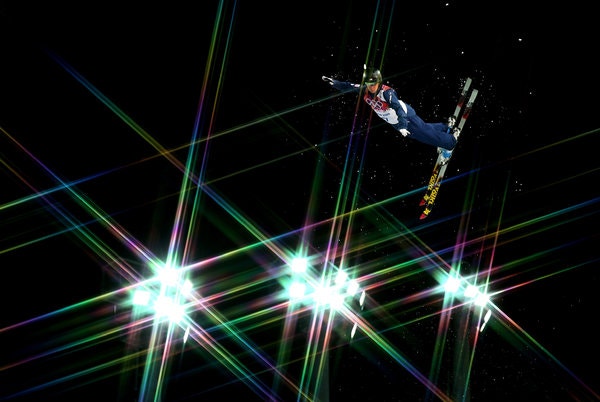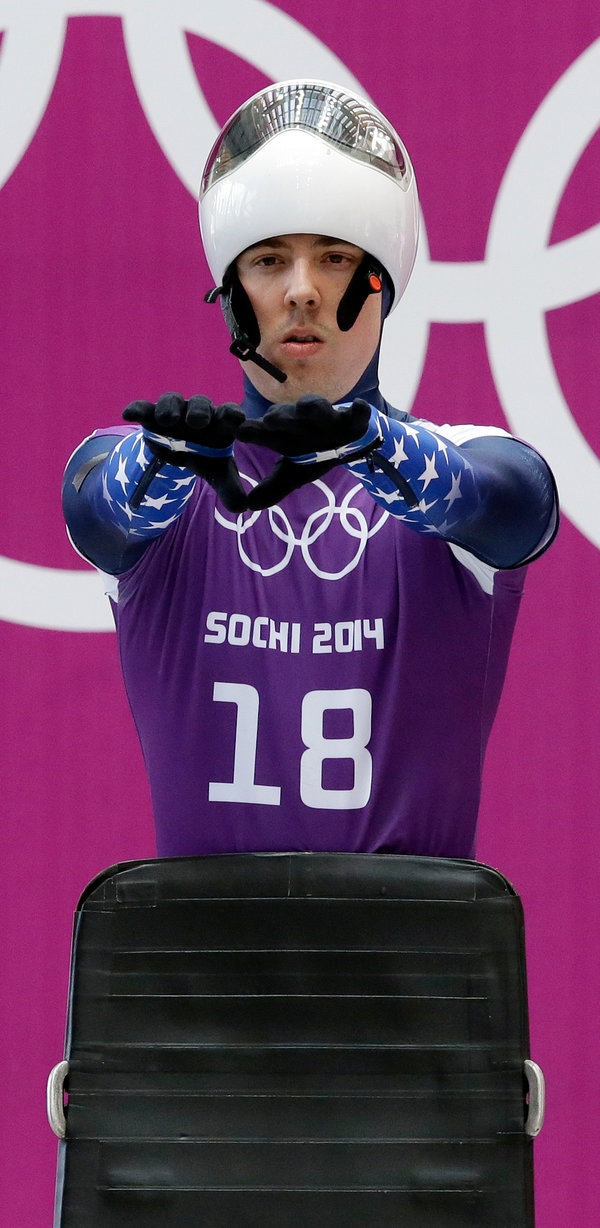Olympians Use Imagery as Mental Training
Emily Cook, of the United States freestyle ski team, visualizes each aerial jump as part of her training for the Olympics.
www.nytimes.com 5 mins read
By Christopher Clarey
KRASNAYA POLYANA, Russia — The Canadian bobsledder Lyndon Rush had not yet arrived in Sochi. But he was already on the Olympic sliding track as he sat in a chair in the Munich airport several days before the Winter Olympics, his eyes wide open but his mind’s eye far away as he traced a sinuous path through the air with his left hand.
“I just went from 7 to 14,” Rush said, referring to the section of the track between Curve 7 and Curve 14.
Visualization has long been a part of elite sports. Al Oerter, a four-time Olympic discus champion, and the tennis star Billie Jean King were among those using it in the 1960s.
But the practice of mentally simulating competition has become increasingly sophisticated, essential and elaborate, spilling over into realms like imagining the content of news conferences or the view from the bus window on the way to the downhill.
“The more an athlete can image the entire package, the better it’s going to be,” said Nicole Detling, a sports psychologist with the United States Olympic team.
This is, more than ever, a multisensory endeavor, which is why the term “imagery” is now often preferred to “visualization.”
“Visualization, for me, doesn’t take in all the senses,” said Emily Cook, the veteran American aerialist. “You have to smell it. You have to hear it. You have to feel it, everything.”
Imagery has seldom been more in evidence than in Sochi, where the starting areas have been full of Olympians going through the motions, figuratively or literally. “Oh, yeah, it’s ridiculous; we’re all up there flapping our arms,” Cook said. “It looks insane, but it works.”

From mountain cluster to coastal cluster, from slope to speedskating oval, athletes are closing their eyes (or not) and seeing the near future. It is a vast parallel sporting universe of hope and occasional misery.
“Sometimes their eyes go back a little so that their whites show, and it’s really kind of creepy,” Erin Hamlin, the American bronze medalist in the luge, said of her fellow competitors. “Some people get really into it, and because we paddle to start, they’ll paddle really hard on the bench and all of the sudden you’ll be sitting there really quiet and someone will hit the bench really hard, and it will kind of startle you.”
The Winter Olympics are full of events that are contested in controlled, fairly predictable environments. Consider aerials and ski jumping. The wind or weather patterns may shift. The crowd noise may vary. But there is no direct competitor to change the dynamic, and in contrast to Alpine skiing events, no setting of gates to change the geometry.
But the most predictable Olympic environment is the sliding track. There are limited training runs during the Olympics, but Rush said that before competing, he had mentally driven the Sochi course hundreds of times from start house to finish.
“I’ve tried to keep the track in my mind throughout the year,” he said. “I’ll be in the shower or brushing my teeth. It just takes a minute, so I do the whole thing or sometimes just the corners that are more technical. You try to keep it fresh in your head, so when you do get there, you are not just starting at square one. It’s amazing how much you can do in your mind.”
Leading Winter Olympic nations clearly agree. The Canadian team came to Sochi with eight sports psychologists. The Norwegians came with three, including Britt Tajet-Foxell, who has worked with the cross-country star Marit Bjorgen as well as dancers at the Royal Ballet in London.
The United States brought nine sports psychologists, including five for its ski and snowboard program.Kyle Tress of the United States getting ready for a practice run in skeleton.CreditDita Alangkara/Associated Press

“The U.S. team has been engaged with sports psychology for a long time, and it’s really starting to get attention from other nations, so now you see they carry far more psychologists than they used to,” said Luke Bodensteiner, executive vice president at the United States Ski and Snowboard Association. “But for us it’s a pretty intense endeavor. We had 93 athletes here in our sports, and there’s no way one person can cover 93 athletes.”
The psychologist Detling, an assistant professor at the University of Utah, worked with the aerialists here after working with the short-track speedskating team in 2010. Detling has collaborated with Cook since 2002, when Cook was recovering after a crash that left her with broken bones in both feet.
Imagery has long been one of their focal points, and when Cook was in the midst of an injury layoff that lasted more than two years, she and Detling first used imagery to see and feel her bones heal.
They also created imagery scripts, highly detailed written accounts of the competition process from “Point A to Point Z.” Each jump sequence lasts about 10 seconds but packs a great deal of action into that small window, particularly in the air with the flipping and spinning. But Cook broke it all down and then recorded the script.
“I would say into the recorder: ‘I’m standing on the top of the hill. I can feel the wind on the back of my neck. I can hear the crowd,’ ” Cook said. “Kind of going through all those different senses and then actually going through what I wanted to do for the perfect jump. I turn down the in-run. I stand up. I engage my core. I look at the top of the jump.
“I was going through every little step of how I wanted that jump to turn out.”
Cook then played the recording back as she relaxed, eyes closed, feeling her muscles firing in response. She said that such mental work helped her return to the sport a better jumper and that she also had used imagery to break the cycle of negativity. Whenever fear surfaced, she would picture herself pricking a big red balloon with a pin.
“That sound and that immediate switch would kind of snap me out of it,” she said, adding, “The last couple years, I’ve definitely gotten to a point where when I’m on the hill, it’s very quick for me to switch from a negative thought to a positive one.”
